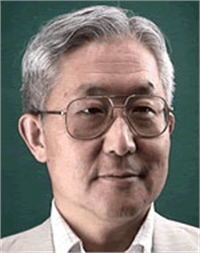Abstract: Sensitive superconducting accelerometers and gravity gradiometers have been developed for precision tests of laws of gravity, searches for new forces and particles, and gravity survey. These devices utilize flux quantization, the Meissner effect, SQUID amplifiers, as well as the enhanced mechanical stability of materials at cryogenic temperatures to achieve extremely high scale-factor stability and sensitivity.
A superconducting gravity gradiometer (SGG) was used to perform a null test of Newton’s law of gravitation. This experiment set the best limit for the inverse-square law at 1 m: two parts in 104. The original SGG, fully developed in the 1990’s, had mechanically suspended test masses, which limited the sensitivity to 2 × 10-3 E Hz-1/2 (1 E = 10-9 s-2). Magnetically levitated test masses will improve the sensitivity by another two to three orders of magnitude. Such an advanced SGG is under development with NASA support for gravity mapping of Earth and planets. An enlarged version of such an instrument could be constructed to search for gravitational waves in the new frequency window of 0.1-10 Hz. In this talk, I will describe the principles, designs, and expected sensitivities of these instruments.
Biography: Dr. Paik has pioneered in gravitational-wave detection and precision tests of the laws of gravity. He received his Ph.D. in physics at Stanford University in 1974. From 1978 to 2011, he served as a faculty member at the University of Maryland. In 2011, he retired from the faculty position and has been working as a research professor of the University of Maryland. He has published over 120 scientific papers on precision gravity experiments and measuring instruments. Professor Paik invented the superconducting gravity gradiometer (SGG). In the 1980’s, he carried out the most sensitive test of Newton’s inverse-square law at 1-m distance using his SGG. The Maryland SGG is the world’s most sensitive operating low-frequency gravity sensor to date. Recently, he has been carrying out a cryogenic experiment in search for extra dimensions below 100 micrometers. He is also developing a more sensitive SGG that could map the gravity field of Earth and other planets. Recently, he proposed a new gravitational-wave detector called SOGRO, which could open a new window for gravitational waves at 0.1 to 10 Hz. Professor Paik served in the science teams for the GEOID (Gravity for Earth, Ocean and Ice Dynamics) and STEP (Satellite Test of the Equivalence Principle) mission. From 2004 to 2007, he served as a distinguished visiting scientist at Jet Propulsion Laboratory.


